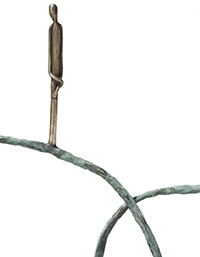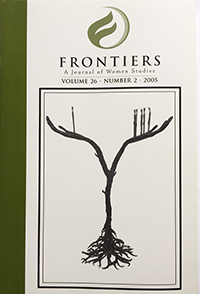[vc_row row_type=”row” use_row_as_full_screen_section=”no” type=”full_width” angled_section=”no” text_align=”left” background_image_as_pattern=”without_pattern” css_animation=””][vc_column][vc_gallery type=”image_grid” images=”17027″ img_size=”2000×500″ onclick=”” column_number=”0″ grayscale=”no” images_space=”gallery_without_space”][/vc_column][/vc_row][vc_row row_type=”row” use_row_as_full_screen_section=”no” type=”grid” angled_section=”no” text_align=”left” background_image_as_pattern=”without_pattern” padding_top=”0″ padding_bottom=”0″ css_animation=”” css=”.vc_custom_1475526509141{margin-top: 0px !important;margin-bottom: 0px !important;border-top-width: 0px !important;border-bottom-width: 0px !important;padding-top: 0px !important;padding-bottom: 0px !important;background-position: 0 0 !important;background-repeat: repeat !important;}”][vc_column][vc_column_text css=”.vc_custom_1475748623025{padding-top: 10px !important;padding-bottom: 10px !important;}”]

Stratman is an artist of constant growth and movement. Regular journeys between her studios in the US and Australia reflect core themes throughout her works. Raised in Phoenix and residing in Melbourne, Stratman is prolific in her representations of universal issues such as belonging, and connectedness to one’s environment.
Her sculptures often incorporate genderless, faceless figures, turning the primary focus to the interplay between human and nature. Her bronze representations of human anatomy and plant forms are particularly celebrated and she is uncompromising with regard to the quality and integrity of her interpretations. Yet her works are neither intrusive nor ambiguous; there is a fine balance at play and Stratman is known for her ability to convey poignancy via subtlety. In her Graft Series, for example, emotion appears latent in featureless figures that emerge seamlessly from plant limbs. However, a delicate contrast in posture or the gentle tilt of a head suddenly evokes context and point of view, allowing Stratman’s audience to consider and identify with individual perspective and voice. The result is pure connection.
Memorable art often prompts curiosity regarding the artist’s source of inspiration and personal creative processes. This prize-winning artist evidently draws inspiration from her native and adopted countries; the diversities as well as similarities of the landscape, art and culture are ever-present threads throughout her work. Stratman’s explorations across two continents, coupled with an interest in quantum theory, clearly contribute to her success in depicting subject matter at both the universal and subatomic level.
Stratman’s craft is labour-intensive and multi-facetted; her studios are in constant flux with sculptural works at their many and varied stages. This sculptor is adept. Her use of age-old processes to mould, weld, hammer, grind and polish is also testimony to the passion that brings these sculptures into meaningful being. During the process, thought-provoking lyrics by a broad range of musicians provide focus as well as inspiration. While these artists sing of lost seasons or love, or nature and humanity, Stratman textures another tree limb or gives voice to another faceless figure.
It is not surprising that commissions for Stratman’s sculptures span the private and public sectors. Equally, recognition and exhibition of her works extends well beyond the local level. Jennyfer Stratman’s works are currently exhibited in private collections and public galleries throughout Australia, North America, Asia and the United Kingdom.
Lena Pasqua 2013
Author of Choir of Burning Candles
 New Growth: The Art of Jennyfer Stratman
New Growth: The Art of Jennyfer Stratman
Christmas 2004 and I find myself transplanted from my home in Melbourne, Australia to the chilly high desert of Albuquerque, New Mexico for the holidays. Here I find myself, by way of distraction, contemplating the work of American artist Jennyfer Stratman. In a strange way, my own temporary re-location brings with it a greater understanding of Stratman’s work.
Phoenix-born and Melbourne-based Stratman is a young artist whose life and work have adapted through migration. Her recent work, shown here, follows on from earlier interests in botanical and biological forms. Initially using cast body parts and plant forms to translate personal comments about her environment, sexuality and community, Stratman has developed a visual language that intimately communicates a unique perspective on common human experiences.
In recent years, Stratman has brought to her work references to the migrant experience. Since moving to Australia in 2001, she has established studios in Melbourne and Phoenix. The effort of transplanting and maintaining her artistic practise in both countries has been a struggle uniquely depicted in her work. Stratman’s struggle in assimilating with her new environment echoes strongly with American and Australian audiences, as both countries are keenly aware of their own migrant histories. And like a migrating bird, Stratman makes regular journeys from one country to the other, collecting influences and experiences along the way.
Stratman has cited the intensely personal expressions of artists such as Louise Bourgeois, Ana Mendieta and Frida Kahlo as influential in her own development. Certainly, she pours her own potent emotions into depictions of people lost, unable to communicate or struggling to liberate themselves of earthly burdens. Stratman’s main communicative method is empathy. Her figures are dynamically placed in their surroundings, attempting unification where it is blocked, striving for movement or extension where it is grounded. We recognise their need to manoeuvre within and gain control over their given environments as being a common human response to adversity.
Stratman approaches her work with sparsity of detail; her figures are bare sketches, yet with the subtlest inflection they indicate intense emotions such as love, yearning, loneliness or kinship. There is a delicious tension between the femininity of her subjects and the masculinity of her techniques. Cast or fabricated patinated metals and scorched wood feature frequently as materials in Stratman’s free-standing and wall-mounted sculptures. She destroys the unblemished surface of her chosen medium and burns into it a new and far more complex imagery.
The Southwest of Stratman’s personal history is ever-present in her work, although always through subtle and indirect references. However, in Wandering Star, the flattened mesa-tops of the landscape and the swirling heatwaves of the desert in summer are present as reminders of her origins. The title, however, leads us to understand that the Wandering Star is moving away from the familiarity of this landscape into one not shown but implied.
These quietly controversial works serve to remind us that figurative sculpture continues to play a vital role in contemporary art, despite often being overshadowed by more conceptual and attention-grabbing work. These sculptures ask that we, as human beings, work harder to communicate with each other, to express our emotions and to respect the place from which we came and where we are now.
Lisa Richards
Lisa Richards is a Melbourne-based, London-born international citizen, with family in New Mexico. She graduated in History of Art at Manchester University, UK, in 1994 and worked as an arts manager for several London based organizations. In 2001 she migrated to Melbourne and has been Gallery Manager for Christine Abrahams Gallery over 3 years. She has also served on the Board of Management for the Contemporary Sculptors Association, Melbourne. Her next project will be a Master of Visual Culture, primarily researching International artist workshops.[/vc_column_text][/vc_column][/vc_row]